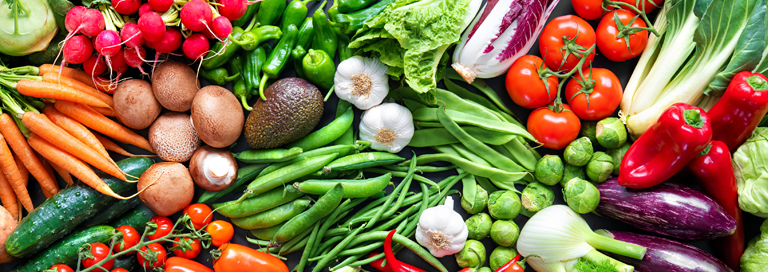Every day, you’re being robbed of the lifesaving nutrients you need.
Big Agra’s focus is on reaping the maximum number of crops at the cheapest cost. Nutrition has nothing to do with it.
The U.S. Congress knew there was a problem back in 1936.
That’s when a group of doctors introduced Document No. 264 to the floor of the United States Senate. It was a dire warning that the mineral content of the soil was eroding. Vegetables were losing their power, and people were at risk.
Unfortunately, Congress did nothing. So today, we’re feeling the effects…
For instance, just look at the U.S. Department of Agriculture’s (USDA) nutritional values for fruits and vegetables today compared to 1975.1
Here’s the loss of vitamins and minerals:
- Broccoli: Calcium and vitamin A are down 50%
- Cauliflower: Vitamin C is down 45%, vitamin B1 is down 48%, and vitamin B2 is down 47%
- Collard greens: Vitamin A is down 45%, potassium is down 60%, and magnesium is down 85%
Even the USDA admits nutrient levels have fallen by 80% in the last 30 years. For example, you’d have to eat ten servings of spinach to get the same level of minerals from just one serving about 50 years ago.2
Producers create “hybrid” forms of your fruits and vegetables — not for their ability to store nutrients — but for their color, weight, and shelf life.
Why?
So they’ll look nice and pretty when they sit under the fluorescent lights of your supermarket.
You may think they look nutritious, but “under the hood” contains little more than indigestible cellulose, sugar, and water.
Growers call this the “dilution effect.” For them, more water and more pith help their produce ship well, look good, and weigh a lot. But it virtually wipes out their vitamin and mineral
content.It’s causing us to become nutritionally bankrupt.
This lack of nutritious foods is causing a health crisis in the U.S. Modern diseases that never affected our ancestors — chronic conditions like diabetes, heart disease, cancer, and dementia — are directly linked to low nutrient levels.
A 2017 study found that 90% of Americans fail to meet the most basic recommendations of plant nutrients — and 30% are at risk of at least one vitamin deficiency.3
And a staggering 303,600,000 Americans — 92% — fail to meet their most basic nutritional needs.4
Get more nutrients from your produce in 3 easy steps
When it comes to getting the most nutrients out of your fruits and vegetables, this is what I do for myself and my family — and what I recommend for my patients:
-
- Choose locally grown organic produce from a family farm. Food that’s grown close by has more nutrients than foods that have to be transported. Allowing produce to ripen naturally — while it’s still in the dirt — allows more nutrients to develop. And further studies have shown that vitamins, phytochemicals, antioxidants, and many other important nutrients decrease as fresh food ages. Visit a farmer’s market. Or look for Community Supported Agriculture (CSA) programs in your area.
- Add healthy fats. If you don’t add a little healthy fat to veggies, your body can’t absorb all the nutrients it would otherwise. A study showed that compared to full-fat oils, people who use low- or fat-free dressing didn’t absorb nearly enough beneficial carotenoids from their food.5 Along with olive oil, I recommend adding coconut oil, walnut oil, and grape seed oil.
- Don’t over- or undercook your veggies. It’s a myth that eating raw vegetables is healthier. It depends on the food. Some produce is most nutritious uncooked, while other kinds need heat to bring out their nutrients. For example, to release the antioxidant lycopene, tomatoes need to be heated. But boiling destroys vitamins B and C in foods like collard greens and kale. Vegetables that are healthiest cooked include asparagus, carrots, celery, mushrooms, spinach, and tomatoes. Those best eaten raw include onions, broccoli, garlic, kale, beets, and red peppers.
To Your Good Health,
![]()
Al Sears, MD, CNS
References:
1. Vegetables without Vitamins. Life Extension Magazine. March 2001.
2. Heinrich, E. The Root of All Disease. TRC Nutritional Laboratories, Inc. 2000.
3. Lee-Kwan SH, et al. “Disparities in State-Specific Adult Fruit and Vegetable Consumption – United States, 2015.” MMWR Morb Mortal Wkly Rep. 2017 Nov 17;66(45):1241-7.
4. Bird JM, et al. Risk of deficiency in multiple concurrent micronutrients in children and adults in the United States. Nutrients. 2017;9(7):655.
5. Zheng J, et al. “Association of plasma biomarkers of fruit and vegetable intake with incident type 2 diabetes: EPIC-InterAct case-cohort study in eight European countries.” BMJ. 2020; m2194 DOI: 10.1136/bmj.m2194.

